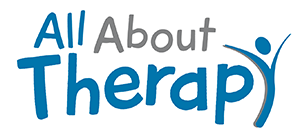Do you have a difficult time engaging your young child in play? So much of the time as adults, we can find ourselves trying to get a child to engage in play the way we think it should be done.
For example, a child bangs a spoon on a toy kitchen set instead of using the spoon to pretend to eat the food, or when first introduced to scissors a child only wants to see how they can open and close the scissors (plastic scissors recommend as the first pair of scissors!).
Even in these instances, the child is still learning, and sometimes it’s hard for us to see. To revisit our examples, a child who uses a spoon to bang on a toy kitchen set is learning a cause and effect pattern of their actions: I bang the spoon on the kitchen set, it makes a noise.
A child who first uses scissors to see how they open and close is learning how the mechanism of the scissors works. Here are some tips to help get your child engaged in play by first meeting them at their current level and then helping them to meet greater and greater challenges. These strategies come from a Natural Learning Environment Practice model that focuses on using what your child is interested in.
1. Invite: The first step to engaging a child in play is to invite them into the activity. Some ways to do this include:
-Get down on your child’s level: bend or squat down, or sit at a table with your child so you can see them eye to eye. This will help get their attention. Once you are eye to eye with your child, match their facial expression. Smile if they’re smiling, frown if they are frowning.
-Match the tone of voice of your child (if they’re excited speak in an excited voice, if they’re sad speak in a sad voice).
-If your child is open to taking your hand and being guided to an activity try reaching your hand out to them. If they are not open to holding your hand, gesture for your child to come over and join you in an activity.
2. Engage: See if your child will engage with whatever toys or items are present.
-Once your child starts to engage with a toy in some way (for example, banging blocks together) start engaging with the toy in the exact same way. If your child is looking at a ball, look at a ball with them.
-Respond positively to however your child is engaging with an item or toy. Let your child know that you see what they are doing and you are interested in doing the same thing too.
3. Teach: Add on to what your child is engaged in.
-Once you’re child is engaged, show them a new way to interact with the same toy or item. For example, show them how they can also stack one block on top of another.
-See if your child will take turns with you in doing whatever they are doing. (For example, if your child is looking at a ball see if they will show it to you, pass it to you, or accept help rolling it).

I hope you enjoy inviting, engaging, and teaching your child to play! Get more tips, interact with our OT’s and connect with other parents by joining our Facebook Group Here.


